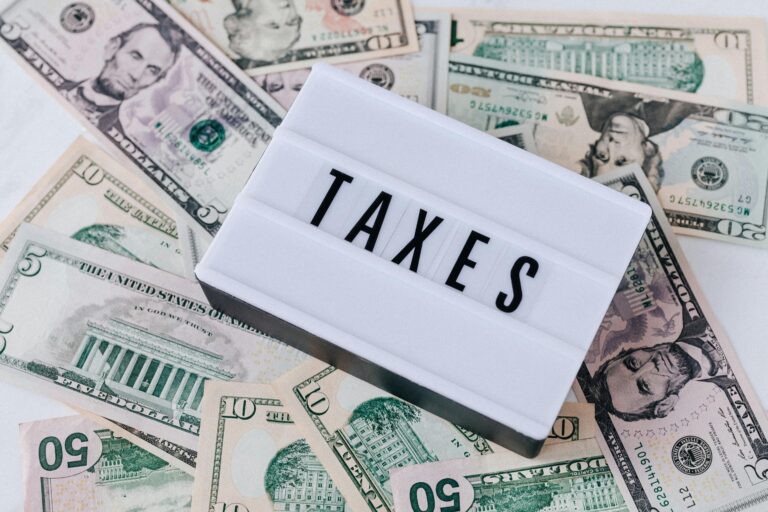
President Donald Trump has proposed one of the most significant changes to the real estate tax landscape in decades: eliminating capital gains taxes on home sales. This proposal, which Trump has described as a potential “great incentive” for the housing market, represents a dramatic departure from current tax policy and could fundamentally reshape homeownership economics across the United States.
Trump’s Public Position and Rationale
In comments to the press on Tuesday, President Donald Trump suggested he is considering eliminating capital gains taxes on the sale of homes. Speaking from the Oval Office, Trump made his position clear: “If the Fed would lower the rates, we wouldn’t even have to do that,” Trump told reporters in the Oval Office. “But we are thinking about no tax on capital gains on houses.”
This statement reveals Trump’s strategy of using tax policy as both an economic stimulus tool and leverage against Federal Reserve monetary policy. “I think it’s going to be a great incentive,” Trump said when asked about a bill that could eliminate a tax on primary home sales. The president’s comments suggest he views the elimination of capital gains taxes on home sales as a direct response to what he perceives as inadequate Federal Reserve action on interest rates.
Congressional Support and Legislative Framework
Trump’s proposal has found immediate support in Congress, particularly from Representative Marjorie Taylor Greene of Georgia. Georgia Rep. Marjorie Taylor Greene has introduced the No Tax on Home Sales Act—a measure drafted to eliminate the federal capital gains tax on the sale of primary residences.
The legislative backing provides a concrete pathway for Trump’s proposal to move from campaign rhetoric to actual policy. Greene says the bill could help “boost” the nation’s housing supply, aligning with broader Republican goals of addressing housing affordability and availability challenges through market-oriented solutions.
The timing of this legislative support is particularly significant as it coincides with Trump’s broader tax agenda. This year, House and Senate Republicans worked to enact President Donald Trump’s tax agenda, creating momentum for comprehensive tax reform that could include capital gains elimination.
Current Capital Gains Tax Structure
To understand the scope of Trump’s proposal, it’s essential to examine the current capital gains tax framework for home sales. Under existing law, homeowners can exclude up to $250,000 in capital gains from the sale of their primary residence if single, or up to $500,000 if married filing jointly, provided they meet certain ownership and residence requirements.
For 2025, you qualify for the 0% long-term capital gains rate if your taxable income is $48,350 or less for single filers, or $96,700 or less for married couples filing jointly. But new tax breaks under President Donald Trump’s “big beautiful bill” could expand eligibility by reducing taxable income levels for more Americans.
However, many homeowners exceed these exclusion limits, particularly in high-cost housing markets. Some 29 million homeowners (34%) could exceed the $250,000 threshold for single filers, and 8 million (10%) could be above the $500,000 limit for married couples filing jointly, according to a 2025 study from the National Association of Realtors, or NAR.
Who Would Benefit Most
The elimination of capital gains taxes on home sales would disproportionately benefit certain demographic and geographic groups. Removing or increasing capital gains limits on home sales, as President Trump mentioned this week, would benefit longtime homeowners in the country’s more expensive housing markets.
Older homeowners who have owned their properties for extended periods would see the greatest benefit, particularly those in states like California, New York, and Massachusetts, where home values have appreciated significantly over decades. These homeowners often face substantial capital gains taxes that can reach into the hundreds of thousands of dollars when they sell.
High-cost metropolitan areas would see the most dramatic impact. In markets like San Francisco, Los Angeles, New York City, and Washington D.C., longtime homeowners frequently face capital gains taxes exceeding the current exclusion limits. For these homeowners, complete elimination of capital gains taxes could save tens of thousands or even hundreds of thousands of dollars per transaction.
Potential Market Impact and Housing Supply
Proponents argue that eliminating capital gains taxes on home sales could significantly impact housing market dynamics by encouraging more homeowners to list their properties. The theory suggests that current capital gains tax obligations create a “lock-in effect,” where homeowners avoid selling to prevent triggering substantial tax liabilities.
By removing this tax burden, Trump’s proposal could potentially unlock inventory from homeowners who have been reluctant to sell due to tax consequences. This increased supply could help address housing shortages in many markets and potentially moderate price growth by providing more options for buyers.
However, the actual supply impact remains uncertain. Many factors influence homeowner decisions to sell beyond tax considerations, including emotional attachment to homes, moving costs, and availability of suitable replacement properties.
Economic and Revenue Implications
The fiscal impact of eliminating capital gains taxes on home sales would be substantial. Current capital gains tax collections from home sales generate significant federal revenue, and complete elimination would require offsetting revenue sources or result in increased federal deficits.
The Penn Wharton Budget Model analysis of Trump’s broader tax proposals indicates significant revenue implications. We estimate that incorporating the Trump administration’s major tax proposals into the FY2025 House budget reconciliation would require that the provisions mostly sunset by December 31, 2033. Even so, primary deficits would increase by $5.1 trillion before economic effects and by $4.9 trillion after incorporating dynamic economic effects.
The revenue loss from eliminating capital gains taxes on home sales would contribute to these broader fiscal challenges, requiring careful consideration of funding mechanisms and long-term budgetary implications.
Critics and Limitations
Not all experts believe Trump’s capital gains elimination would provide broad benefits. Unless you have a lot of equity in your home, you might not save much, according to analysis from financial experts. Many homeowners, particularly first-time buyers and those who haven’t owned their homes for extended periods, would see minimal benefit from the change.
The proposal could also be viewed as regressive, primarily benefiting wealthy homeowners who have significant capital gains from property appreciation. Middle-class and lower-income homeowners who don’t exceed current exclusion limits would see no tax benefit, while wealthy property owners could save substantial amounts.
Geographic disparities would be significant, with homeowners in expensive coastal markets receiving much greater benefits than those in more affordable inland areas. This could exacerbate regional wealth disparities and provide disproportionate benefits to already-affluent communities.
Relationship to Broader Tax Strategy
Trump’s capital gains proposal is part of a comprehensive tax reform agenda extending beyond individual provisions. Key provisions from the Tax Cuts and Jobs Act (TCJA) of 2017 are set to expire Dec. 31, 2025. With a Republican-led White House and Congress, policymakers are projected to preserve a majority of the TCJA provisions, but they will need to find a source of funding for the extensions.
The capital gains elimination could be included in broader tax legislation that addresses TCJA extension, corporate tax rates, and other priorities. His proposed corporate tax rate for 2025 would be 20%. Trump proposes accelerating the tax deduction for R&D expenditures, indicating a comprehensive approach to tax reform that addresses both individual and business tax issues.
Implementation Challenges and Timeline
Even with Republican control of Congress, implementing capital gains elimination would face significant procedural and political challenges. The revenue impact would require careful consideration within budget reconciliation processes, and the proposal would need to fit within broader fiscal constraints.
The nonpartisan Congressional Budget Office estimates that extending the temporary TCJA provisions would cost $4.6 trillion over 10 years. Adding capital gains elimination to this already substantial fiscal impact would require creative financing mechanisms or difficult trade-offs with other priorities.
Timeline considerations are particularly important given the TCJA expiration deadline. At the end of 2025, the individual portions of the Tax Cuts and Jobs Act expire all at once. Without congressional action, 62 percent of filers could soon face a tax increase relative to current policy in 2026.
Real Estate Industry Response
The real estate industry has generally welcomed Trump’s proposal, viewing it as a potential catalyst for increased market activity. The National Association of Realtors, which has long advocated for increased capital gains exclusions, would likely support complete elimination as an even more favorable outcome.
Real estate professionals anticipate that the proposal could stimulate both buying and selling activity by removing a significant transaction cost for sellers while potentially increasing housing supply for buyers. However, the industry also recognizes that implementation details and timing will significantly impact actual market effects.

Conclusion
Trump’s proposal to eliminate capital gains taxes on home sales represents a bold departure from current tax policy that could fundamentally alter real estate market dynamics. While the proposal offers significant potential benefits for longtime homeowners in expensive markets, it also raises questions about fiscal impact, fairness, and implementation feasibility.
The success of this initiative will depend on Congressional support, revenue considerations, and integration with broader tax reform efforts. As Trump administration officials and Republican lawmakers work to address the TCJA expiration deadline, capital gains elimination will compete with other priorities for inclusion in comprehensive tax legislation.
For homeowners, real estate professionals, and investors, Trump’s proposal represents both opportunity and uncertainty. While the potential benefits are substantial for those who would be affected, the complex interplay of fiscal constraints, political realities, and economic considerations will ultimately determine whether this ambitious tax reform becomes a reality.
The proposal exemplifies Trump’s approach to economic policy: using dramatic tax changes to stimulate economic activity while addressing what he perceives as Federal Reserve policy shortcomings. Whether this strategy will translate into enacted legislation remains to be seen, but the proposal has already generated significant attention and debate about the appropriate role of taxation in housing market policy.





